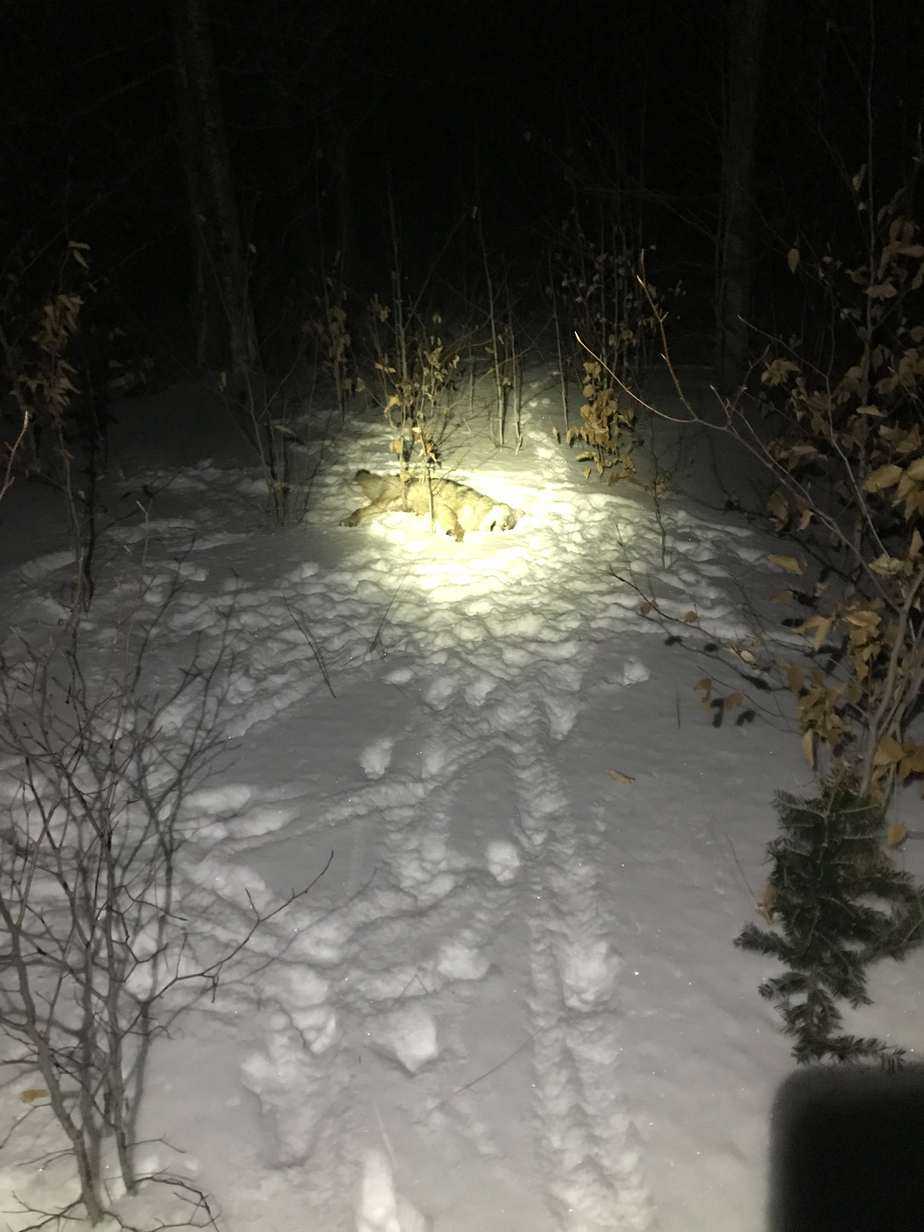Supercharge your coyote hunting abilities by learning how to identify and age coyote scat and coyote paw prints.
Scouting using coyote scat and coyote paw prints.
Every coyote hunter knows, “You have to be where the coyotes are, to call them in.” Scouting means finding a suitable habitat, then discovering undeniable proof they currently inhabit that land.
Coyotes can live anywhere, but they prefer open fields and meadows overflowing with rabbits, insects, and fruits. Once you find a place that meets that description, it’s time to scout it out.
What you will be looking for is fresh sign (scat and tracks). What you will need to be able to do is tell coyote scat (poop) and tracks (paw prints) from those of other animals and determine the freshness (age) of that sign.
Coyote paw prints.
Coyote paw prints are approximately 2 1/8 – 3 1/16 inches long by 1 5/8 – 2.5 inches wide. As with wolves, foxes, and bobcats, the rear paws are slightly smaller that the front ones.
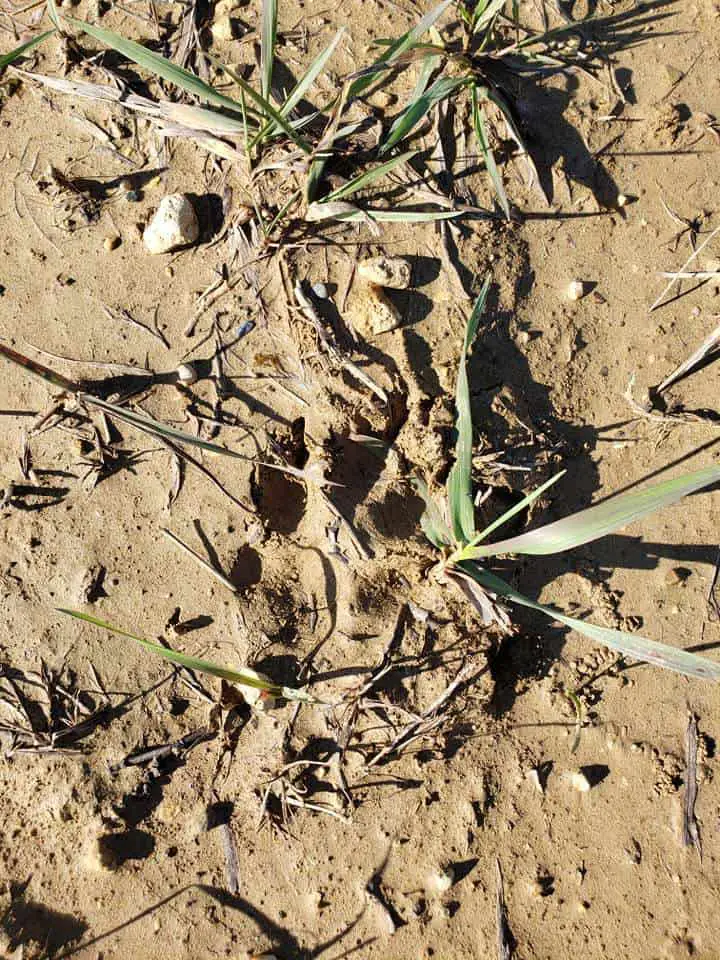
Oh, were you hoping I would use one of those black and white drawings to show you what a coyote’s paw print looks like? Well, Edgar Lone-Wolf Kinsey kills a lot of coyotes. As a professional, he submitted this photo and suggested new predator hunters learn from real sign and not artist’s renderings.
How to tell dog prints from coyote paw prints.
New coyote hunters often find a set of prints and find themselves wondering if a dog or a coyote made them.
Thankfully, there is one surefire way to tell if a track was made by a dog or by a coyote: Can you draw an X between the negative spaces?
Here’s what I mean:
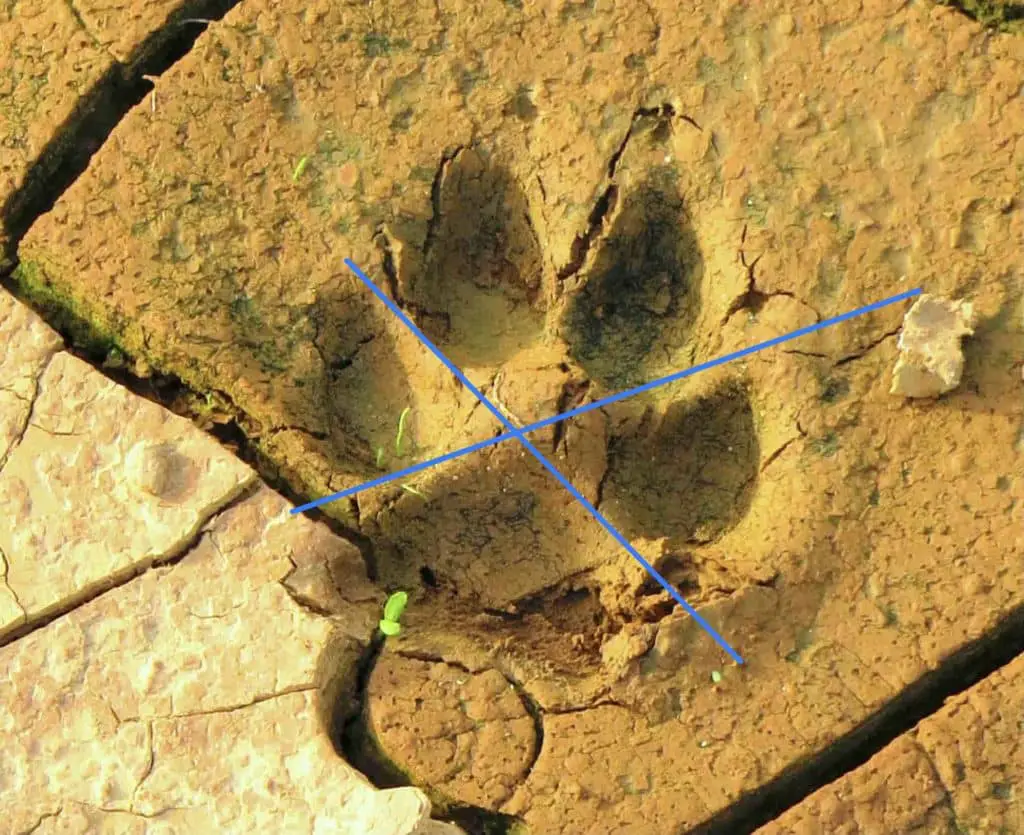
Full disclosure: I stole this incredible tip from the wizards at: https://www.wildernesscollege.com/coyote-tracks.html.
Now, notice how you cannot make the same mark on a dog print without touching the heel mark?
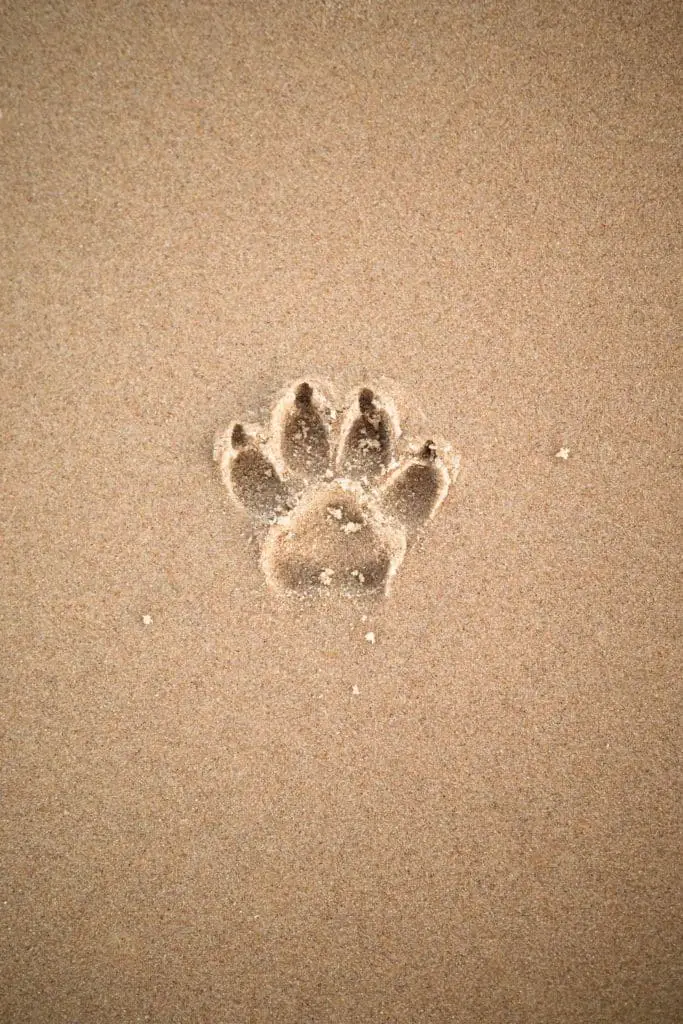
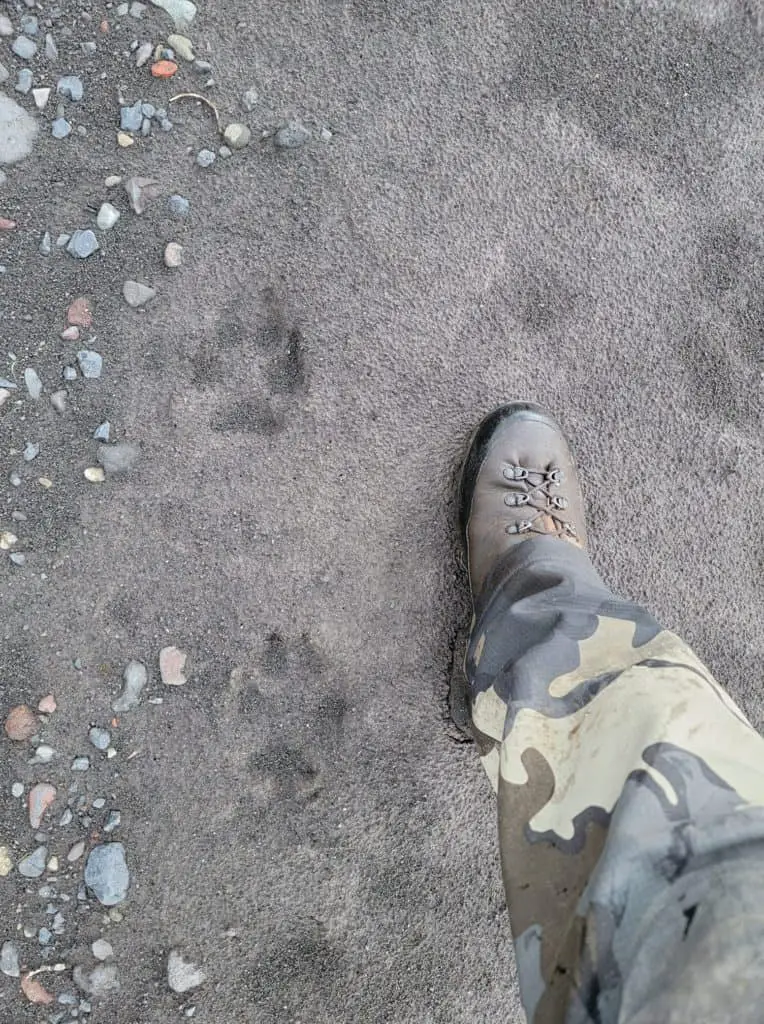
As Dustin Troutman illustrates for us, it’s easy to distinguish a wolf track from a coyote print.
Aging coyote paw prints.
When it comes to aging those coyote tracks you found, the weather in the days leading to your discovery is critical. While mud holds tracks the longest, snow is a frequent weather event during most regular coyote hunting seasons and often provides the best track aging information.
There are two degrees of freshness for coyote hunters when using aging tracks: Tracks more than a day old and 0-3 hours old tracks.
Tracks older than one day provide you with proof that a coyote inhabits the land. For most hunters, this is enough to scout out the area for an excellent calling stand location and return later to hunt the spot.
0-3 hour old tracks mean anything from perhaps still within calling range to you spooked them coming in (check the sign for galloping gait evidence).
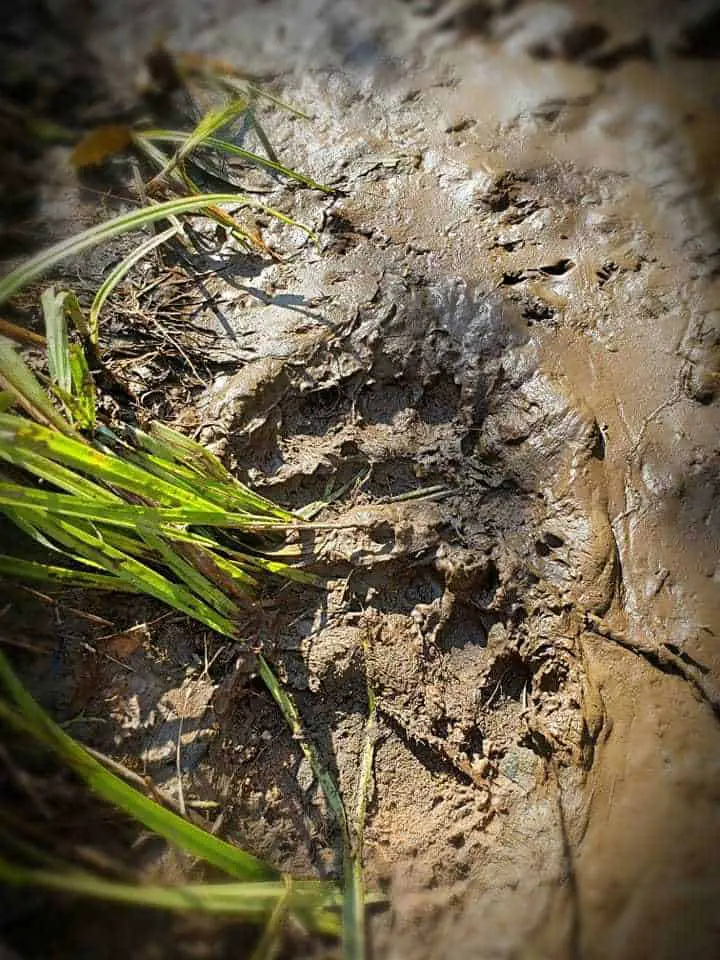
Aging coyote tracks in the snow.
It’s all about the recent weather. Tracks in snow start off sharp and clean. As the temperatures rise, those sharp edges round off. Finally, as temperatures dip below freezing, ice crystals develop inside the track.
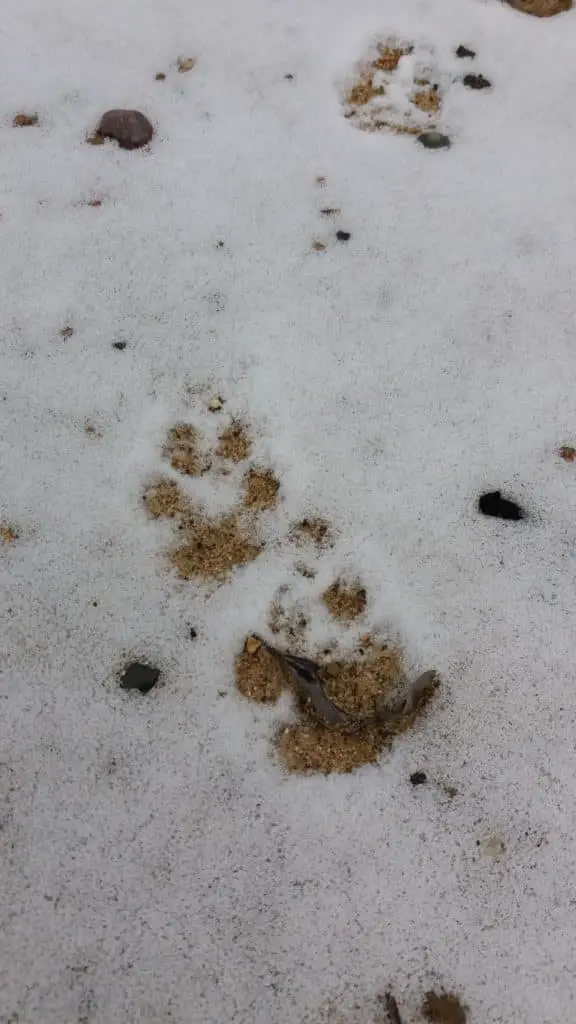
Tracks in deep snow are harder to age than those in light snow. With deep snow, you’ll have to examine the kicked-out (excavated) snow to determine its age. Excavated snow is exposed to the elements, especially melting.
You know they were made after the last snowfall if good clear tracks in the snow have no snow in them.
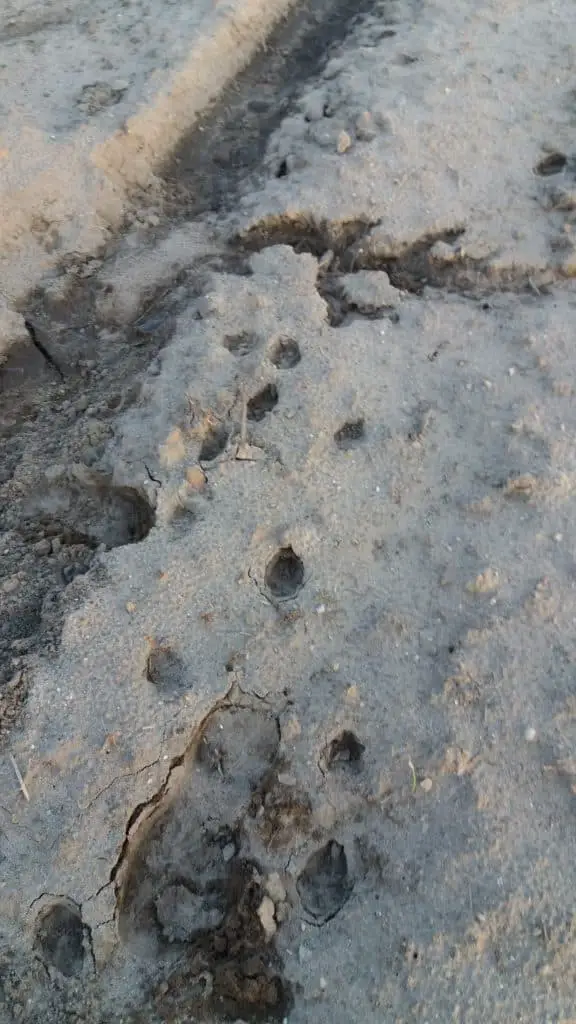
Has any snow built up inside the track if the wind is blowing hard enough to move the snow on the ground?
If you find the track has an icy surface in the morning, then the print froze at some point overnight.
If you find clean, fresh tracks in the morning, check for ice crystals. No ice crystals mean it’s from that morning.
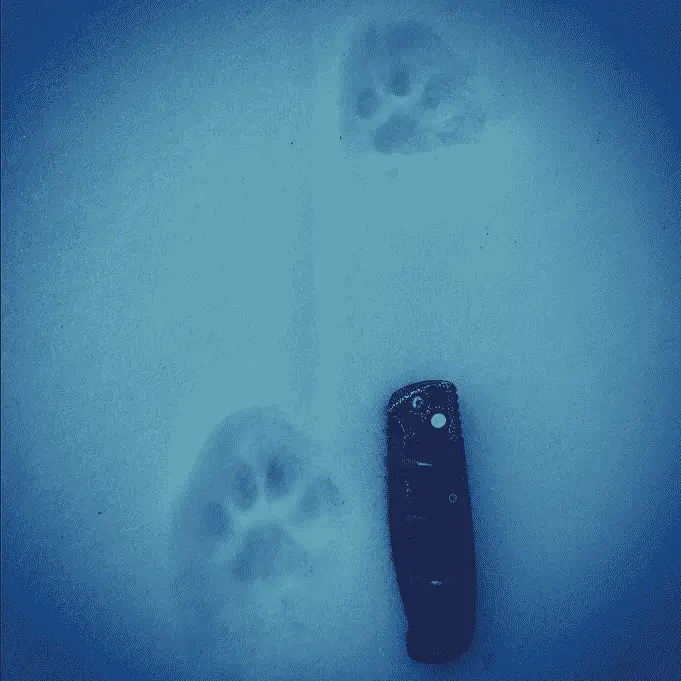
If you find a fresh sharp track when the temps are above freezing or the sun is shining, and the sky is clear, that track is new and hot. 0-3 hours.
Coyote tracks in mud.
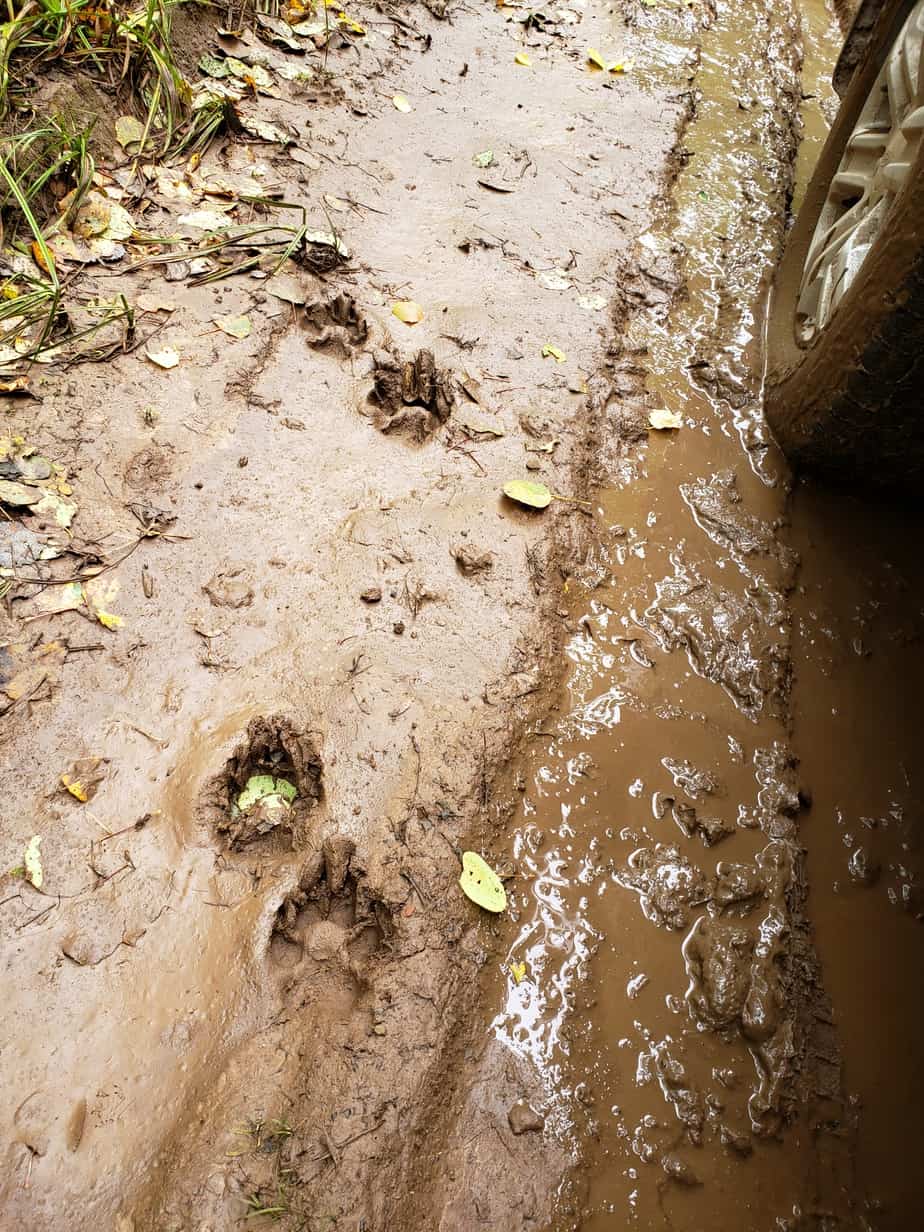
With mud, knowledge of recent weather still plays a critical role, but now we can add gravity to the list of things that aid you to track.
If a coyote fled minutes before you arrived and left tracks in the mud, here’s what you’ll find.
Along the outside of the print, there will be fissured walls and bits of soil. Gravity will soon pull these materials down into the track. If none have yet to fall, the print is exceptionally fresh.
As that track ages, the first changes occur in the color of the cracks and fragments displaced by the coyote’s paws. These slivers and the edges of the track will dry out faster than the print itself.
As time progresses, the track’s sharpness will dull, and its edges will round as gravity takes hold.
Eventually, debris will fall into the print, the rain will collect in it, and heavier rain will wash it away. Knowing what day it rained or when the wind would have been blowing strong enough to move debris into it will help you determine the track’s age.
Aging coyote paw prints in sand.
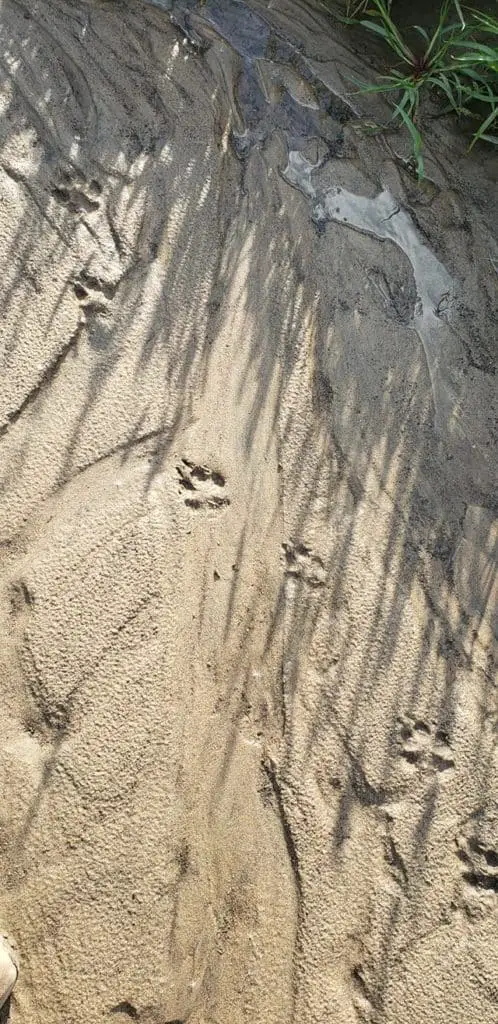
The freshest tracks in the sand will have raised surfaces near the crests of their walls that have not yet had time to begin to dry out. If you find a track in this condition on windy or sunny days, it’s 0-3 hours old.
A track found in the early morning that has no dew in it is from that morning. If it has dew in it, it’s from some point before sunrise.
If the track appears fresh and dry, but it recently rained, it’s from after the rain ceased.
Read a coyote’s mind from it’s tracks while coyote hunting.
A coyote has four speed settings while traveling; walking, trotting, loping, and galloping. Each speed leaves a different track, and each one tells you something about the behavior and goals of the coyote that left them.
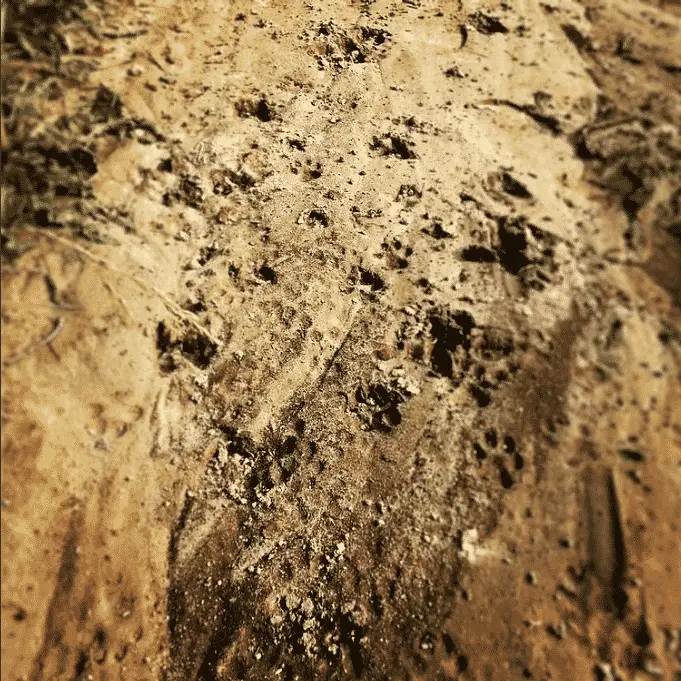
The most relaxed gait (the pace or manner of walking) of a coyote is called “the walking gait.” The walking gait typically results in only one foot every being off the ground at any one time. When walking, the coyote’s legs move forward in an alternating, diagonal string of right front leg followed by the left hind leg, the left front leg, and the right back leg.
A walking coyote is calm but constantly examining the area around itself. Coyotes walk around dens, when in areas providing good visibility and long-range scents, when accompanied by other group members, and when they are well fed and not engaged in hunting.
Coyote paw prints made while walking.
Direct Register Walk: Anytime the hind paw steps into the space just occupied by the front paw on the same side; this is called a direct register. The direct register walk is seen chiefly in “safe” areas (places well known to the predator), presenting other topographical problems. It permits the surest of footing and prevents tripping into holes or over other obstructions.
There are two unique walking gaits.
- Understep Walk: The understep walk is when the hind paw lands behind the front foot on the same side. You’ll find the Understep Walk used where male coyotes have changed guard/bedding positions near occupied dens. While it often suggests a level of great comfort on the part of all predators, where coyotes have had to slink away unseen from a potential threat, they will use this gait.
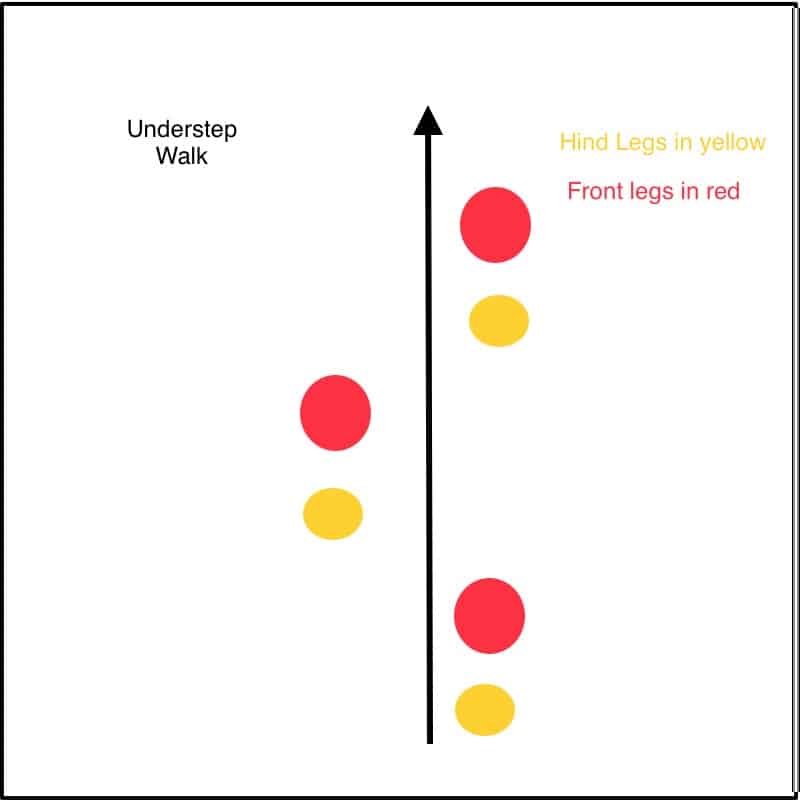
2. Overstep walk: The most common walking gait of a predator. A trotting predator may switch to the Overstep Walk when something catches its attention (a scent on the ground that needs to be examined, etc.).
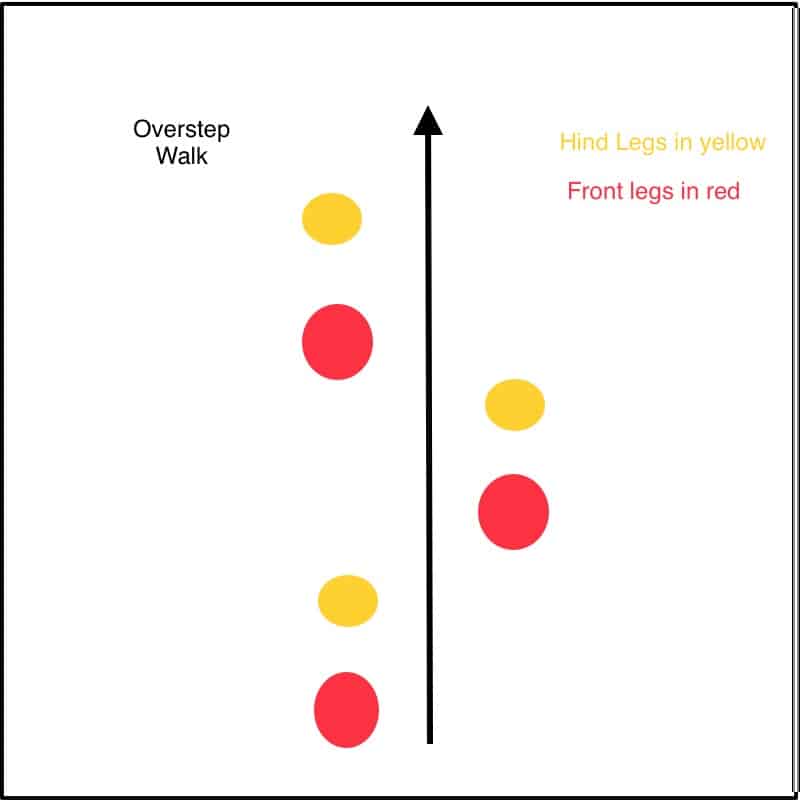
Two special notes:
- If you are tracking a wounded coyote, suddenly switching to a walking gait is a good sign the coyote is fatiguing. Related: How to track a wounded coyote.
- When you find any sign of an unwounded, walking coyote, that animal is a resident inside their territory.
Coyote paw prints made while trotting.
Trotting is faster than walking, but it requires little effort, covers more ground in a shorter time, and is maintainable for long stretches at a time. When trotting, the legs move forward in diagonal, alternating pairs, which typically results in two feet being off the ground at any one time. As a result, coyotes spend more time trotting than in any other gait.
Trotting coyotes leave tracks that are very narrow and straight.
Direct register trot: When a coyote is patrolling or hunting inside its territory, the direct register trot is its usual gait. The understep and overstep trots are rarely seen outside of some form of group interactions.
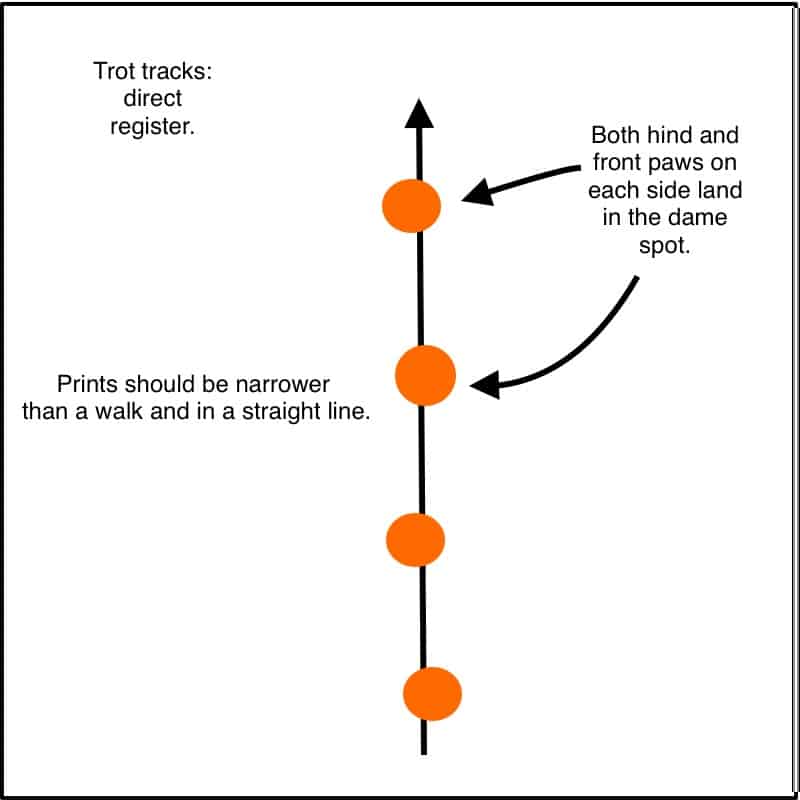
Tracks coyotes make when moving with speed.
Loping: Loping is the first stage of running. A loping coyote typically has only one foot on the ground at any one time. Loping is almost always a sign that the animal is in some level of concern.
Coyotes will lope when trespassing, expressing dominance over other coyotes, or when dashing between open land. While hunting, loping will be used where smaller prey hides in taller grasses and low thick brush.
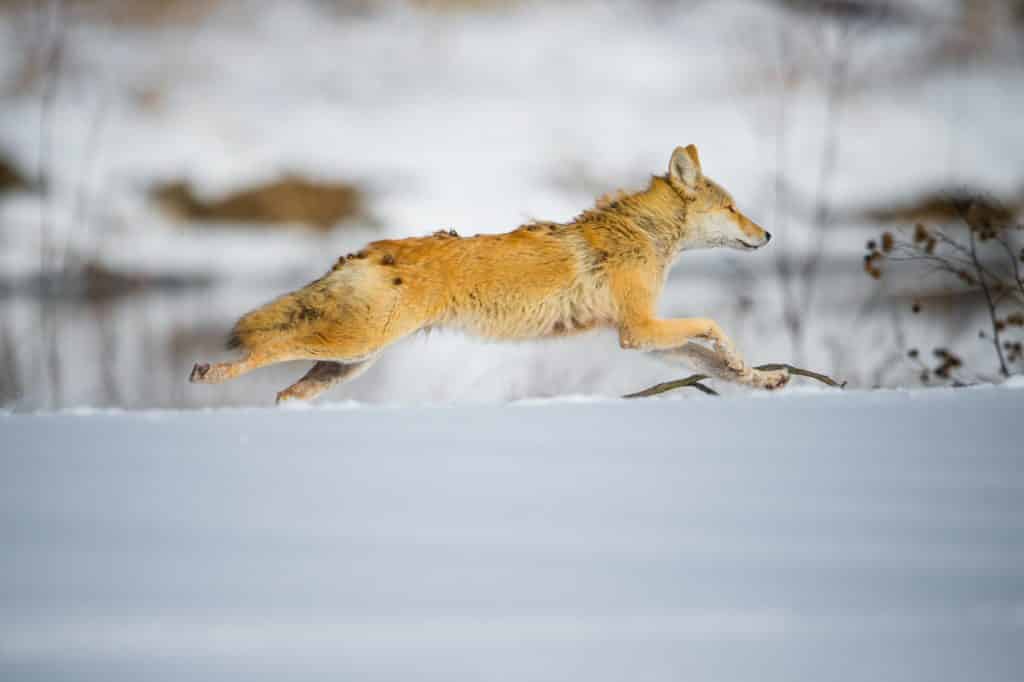
Galloping: Coyotes gallop for two reasons, to escape and to pursue prey. An escape using a gallop will be a straight line. Twists and turns will mark a pursuit using a gallop as the coyote reacts to its prey’s attempts to flee.
When galloping, all four feet can be off the ground at the same time.
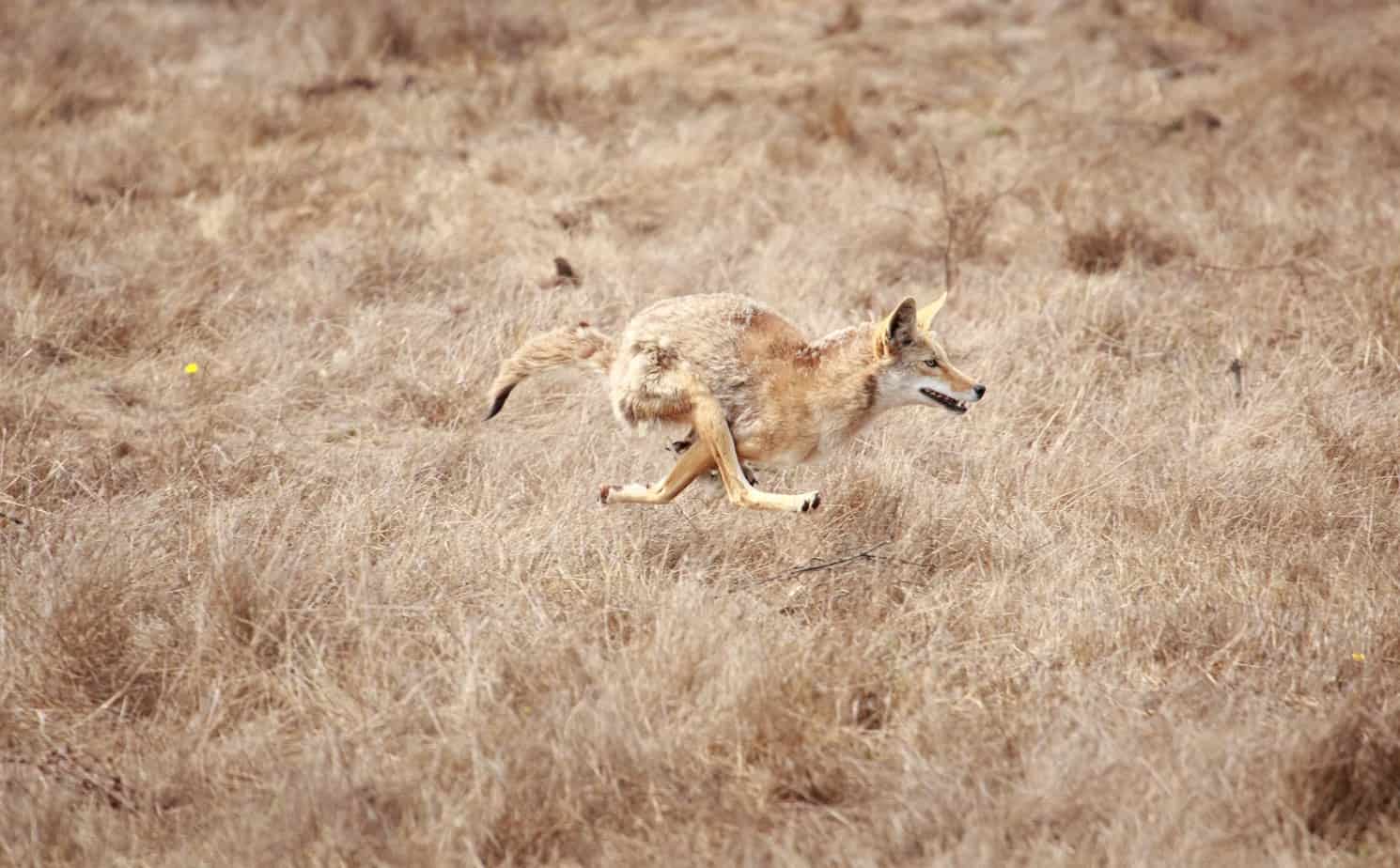
Coyote scat
Scat, feces, poop, or whatever you wish to call it, is like snowflakes; no two are alike. Therefore, trying to determine who dumped (sorry) what on the ground can be difficult. The location, a few essential characteristics, and, if you are lucky, some tracks nearby should help you identify the animal, but there is often an element of uncertainty.
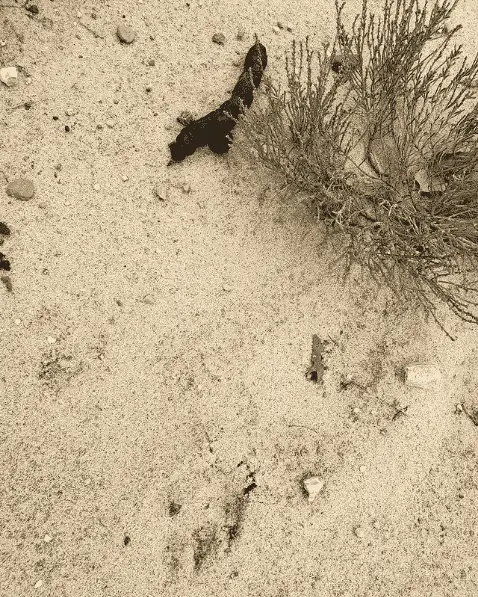 Coyote scat and tracks” class=”wp-image-1808″/>
Coyote scat and tracks” class=”wp-image-1808″/>Coyote scat size, shape, and color.
Coyote scat averages four inches in length and one inch in diameter. Tapered on both ends, it will look like a rope made of hair and bones.
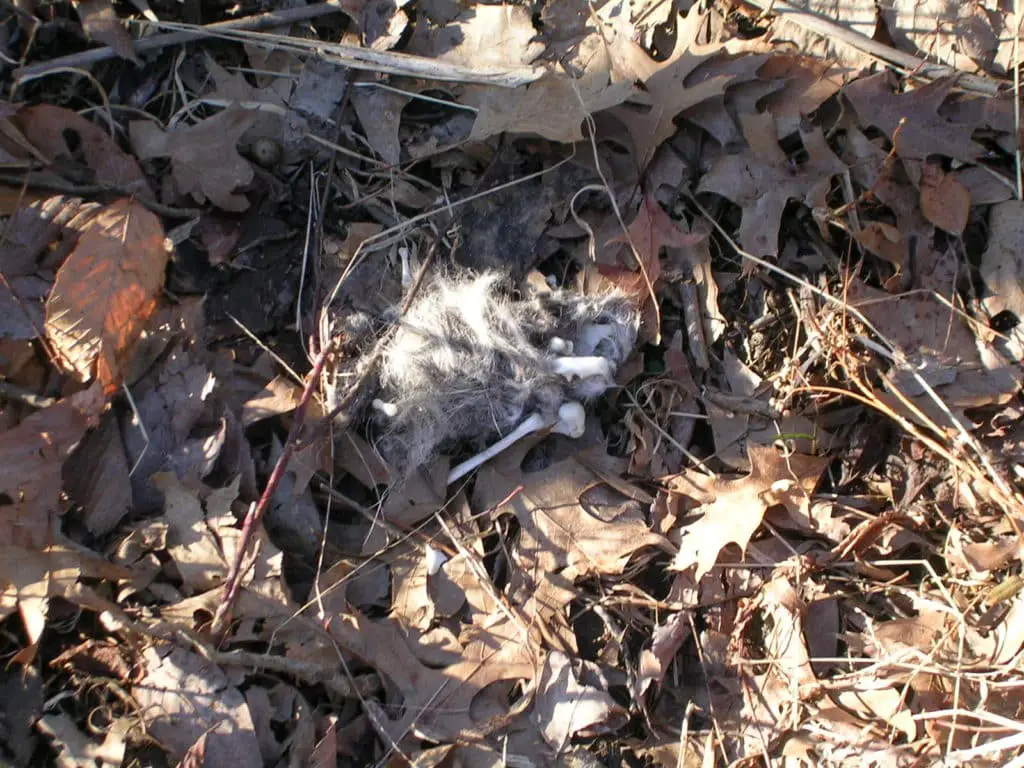
Coyotes often help you locate their poop by making their scat deposit on one or more topographical features. Expect to find it in the middle of trails and along the boundaries of their territories.
Scat from a coyote is typically dark in the winter (from roadkill deer) and light in the summer (more fruits and vegetation). Coyote scat turns gray as it ages. It’s harder than domestic dog scat due to the bone and hair content and has little to no odor a human will notice.
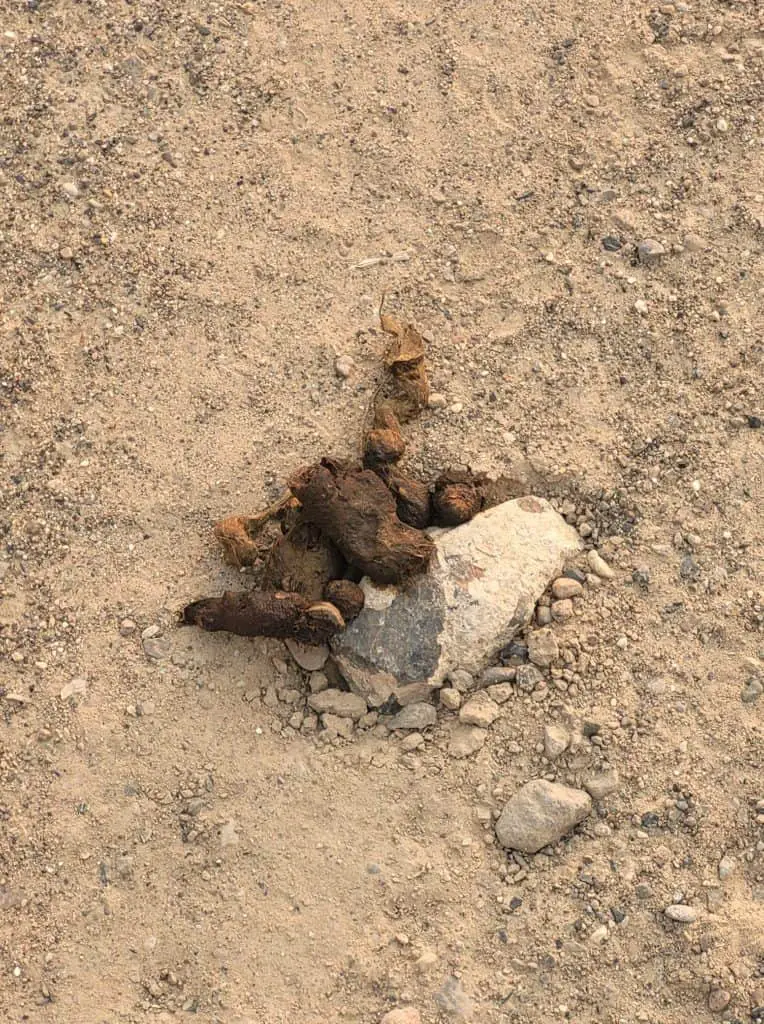
Coyote hunting and scouting using coyote paw prints and coyote scat.
Using coyote scat and paw prints to find where the coyote live and hunt may be the missing tool in your predator hunter’s kit.
Hopefully, this article will help you find the perfect calling locations, so that every hunt ends with a track that looks like this one.
